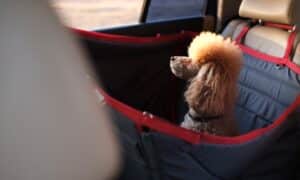One of the most dog friendly methods of training your pet is crate training. The process is very natural and uses the den instincts of the puppy or dog to help them understand where a safe place in the house is for them as well as giving them their own space and area. Since dogs naturally do not want to soil this area they are less likely to mess in the crate leading to faster and more efficient housebreaking.
Routines
Crate training works in conjunction with a puppies body functions. Establishing a routine with the puppy will help with the process and will avoid any unnecessary accidents. To use crate training techniques follow the steps outlined below:
·Feed and water your puppy at the same times (or as close to the same times as possible) each day. Most puppies are fed at least two to four times per day depending on their age.
·When the puppy has finished eating place them in their crate with some toys and soft bedding material. The crate should be where the puppy can still see people and feel part of the family, not where they feel that they are being isolated or punished for bad behavior.
·Approximately 15 minutes after placing the puppy in the crate take them outside or to the area that you wish them to use a bathroom. If you puppy has spoiled the crate prior to this 15 minute mark don’t punish them, simply clean the crate and plan the next time to take them out 5 minutes earlier. This is a process of trial and error but you will eventually find out just when the little puppy will go to the bathroom after eating.
·Have the puppy walk with you to the outside area or toilet area. Praise them when they go. If they are outside for more than 3-5 minutes and are showing no signs of relieving themselves simply place them back in the crate and try again in no more than 5 minutes. Don’t scold or pay undo attention to them until the go outside and eliminate. Immediately give lots of praise and attention and return them to the house for further attention and socialization.
·Puppies quickly learn that by going outside and relieving themselves they will get lots of positive attention and will come back into the house and play with or be around the family.
Cautions with Crate Training
To be sure that crate training is completed correctly make sure that the following occurs:
·Make the crate comfortable with toys, soft, washable bedding and lots of ventilation. It is to be a positive place that is the puppies “den”.
·Never use the crate as a punishment or isolation area. If your puppy begins to associate the crate with being ignored or punished they will quickly stop wanting to go to the crate.
·Keep the crate somewhere that is part of the activity centers of the house so that the puppy can still see people and be in a familiar area.
·Do not keep the puppy in the crate for prolonged periods of time. Confining your puppy to the crate is a form of punishment to the puppy and will make the crate a negative place to be.
There are many resources and books about crate training that provide additional information. Crate training your puppy makes it easy to travel with the dog as they are always at home in their crate no matter where you are or what type of transportation you use.





